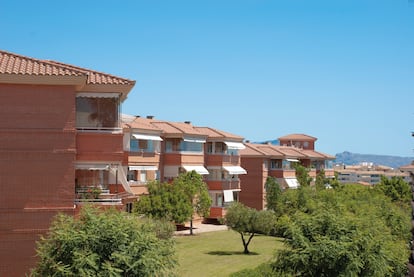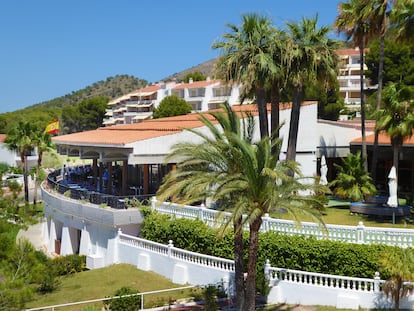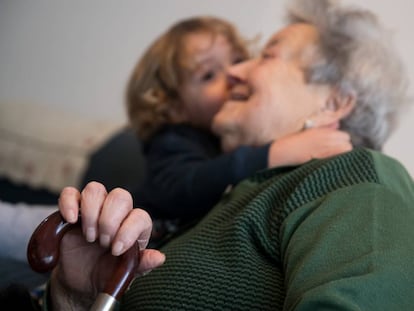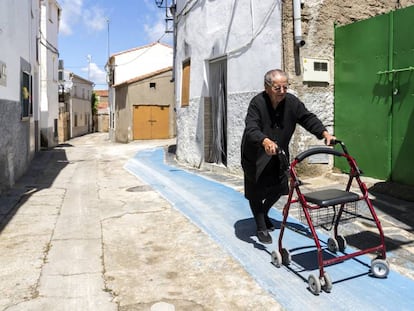Spain sets its sights on Europe’s retirees
Interest in retirement communities for independent seniors is starting to grow, with one complex in Valencia selling to an international fund for €35 million


In the Spanish municipality of L’Alfàs del Pi, where nearly half of the 20,500 residents are from overseas, there is not a single person who has not heard of Forum Mare Nostrum. This is a residential community for seniors that has been operating in Alicante province, in the Valencia region, for 20 years. Most of the residents at Forum Mare Nostrum are from other countries, in particular from Germany, the Netherlands, Belgium and Switzerland, with an average age of 75.
The retirement village is hard to miss – it covers 62,000 square meters, has 229 apartments and a central building that provides social, health and cultural services for the residents. To live in Forum Mare Nostrum, residents must make an advance payment of between €100,000 and €230,000 and pay monthly rent, which ranges from €350 to €950.
Last July, the owner of the complex, Grupo Goya sold the property to Care Property Invest, a Belgian-listed real estate company specializing in housing for seniors, which arrived in Spain in 2020. The sale price was €35 million. The retirement village is still being managed by Grupo Goya, which is now offering rental contracts for 20-year periods.
This is the first time an international fund of this type has bought a residential community for elderly people on Spain’s Mediterranean coast. And it is unlikely to be the last. Vanesa Laport, the sales manager of Grupo Goya, says the company is in “negotiations with several international funds as a part of its five-year growth strategy, both from the point of view of resort properties and as a manager of them.” The group’s plan is to put more senior resorts on the market in both coastal areas and in the city. Indeed, four more complexes are planned or already underway in Alicante province and Palma de Mallorca, in Spain’s Balearic Islands. Together, with Forum Mare Nostrum, which it continues to manage, these properties account for 1,255 homes.
In Spain, people prefer to buy a property and leave it for their childrenJuliette Bleekemolen, from Credo España
The sale of Forum Mare Nostrum is a sign of the small but growing demand for retirement villages on the Mediterranean coast. “We have detected interest among European and North American investment funds specializing in senior living in mature markets such as Germany, Belgium, France and the United States,” says Nuria Béjar, the national director of Healthcare and Senior Living at Savills Aguirre Newman, a property agent that advised on the sale. According to Béjar, this interest is not only in beachfront residences, but rather in all forms of housing available for independent seniors in Spain.
During the 2000-2008 real estate boom, Spain also tried to become the Florida of Europe and attract international retirees in good health and with strong purchasing power. Many of these projects either fell through or were turned into other kinds of housing such as residential buildings and hotels. But the few that remain standing, decades on, have become reference points for this niche market, which is steadily gaining ground. This is the case with Ciudad Patricia, a resort in Benidorm in Alicante province, which has been running for 35 years. In 2005, the complex was bought by Credo España, a real estate group that is part of the multinational Dutch construction company VolkerWessels.
Located on a plot that extends 100,000 square meters, Ciudad Patricia features five apartment blocks and a central building with a restaurant, bar, library, lounge room and beauty salon. A senior home is also on the property, although it does not belong to Credo España. “We are seeing greater interest from investments. They are looking for complexes that are already operational, that they know are going to work,” says Juliette Bleekemolen, from Credo.

The properties in Ciudad Patricia are operated under a lifetime-use regime, meaning residents do not own their homes. For a 78-year-old to live at the complex, the average cost is around €170,000. Most of the residents are from the United Kingdom and the Netherlands, while the average age is 79 for men and 77 for women. Of its 177 apartments, 155 are occupied and 22 are still available.
The Dutch company is also planning to build another retirement community in Sant Pere de Ribes, next to Sitges in Barcelona province, with work set to begin in 2023. This site will offer different types of housing: 209 apartments, 12 chalets, a senior home and a rehabilitation hotel, as well as restaurants and bars to help integrate the community.
These properties are more like a hotel than a house as they offer healthcare assistance and lots of social activity. They tend to be located on the outskirts of big cities, in rural areas or on the coast, because they need large swathes of land. Most of the interest comes from retirees in the UK, Germany, the Netherlands and Scandinavian countries, who are looking for sunny weather, quality health services and a lower cost of living. In order to move to these retirement communities, most either sell their home in their country of origin or their property in Spain, given that the large majority have been living in Spain for some time, says Laporta.
Challenges
The market for retirement communities in Spain, while not large, is growing. But experts warn it still faces challenges. “I have no doubt that the senior resort model is going to work in the next few years, but right now there are no operators; we need a foreign operator or investor with successful cases to come to Spain and replicate the model,” says Alberto Dáiz, the managing director of Capital Markets at the real estate company Colliers.
Aitor Pérez, from senior residency consultancy Gerokon, is not as optimistic: “The main limitations concern their use, given that they are often rotational properties, and the fact that you can’t buy these apartments.”
What’s more, there has so far been little demand from Spanish retirees. “In Spain, people prefer to buy a property and leave it for their children – who take care of their parents – to inherit. Although this is changing,” says Bleekemolen.
The senior resort is just one option for independent senior living. There is also cohousing, coliving and apartments that feature special services. “Right now, there are more than 20 projects aimed at independent seniors in Spain,” says Béjar.
Indeed, sources from Savills Aguirre Newman estimate that “2021 will close with around €235 million in investment and projects with committed investment.”
Tu suscripción se está usando en otro dispositivo
¿Quieres añadir otro usuario a tu suscripción?
Si continúas leyendo en este dispositivo, no se podrá leer en el otro.
FlechaTu suscripción se está usando en otro dispositivo y solo puedes acceder a EL PAÍS desde un dispositivo a la vez.
Si quieres compartir tu cuenta, cambia tu suscripción a la modalidad Premium, así podrás añadir otro usuario. Cada uno accederá con su propia cuenta de email, lo que os permitirá personalizar vuestra experiencia en EL PAÍS.
¿Tienes una suscripción de empresa? Accede aquí para contratar más cuentas.
En el caso de no saber quién está usando tu cuenta, te recomendamos cambiar tu contraseña aquí.
Si decides continuar compartiendo tu cuenta, este mensaje se mostrará en tu dispositivo y en el de la otra persona que está usando tu cuenta de forma indefinida, afectando a tu experiencia de lectura. Puedes consultar aquí los términos y condiciones de la suscripción digital.
More information
Últimas noticias
Maduro pleads not guilty before the federal court in New York: ‘I am still the president of Venezuela’
A new test can detect Alzheimer’s from a finger prick
UN team enters Sudanese city of El Fasher after paramilitary massacre: ‘It’s like a ghost town’
A recipe for resistance: Indigenous peoples politicize their struggles from the kitchen
Most viewed
- Gilles Lipovetsky: ‘If you want to live better and fall in love, take Prozac, don’t look to philosophy’
- Alain Aspect, Nobel laureate in physics: ‘Einstein was so smart that he would have had to recognize quantum entanglement’
- Alvin Hellerstein, a 92-year-old judge appointed by Bill Clinton, to preside over Maduro’s trial in New York
- Why oil has been at the center of Venezuela-US conflicts for decades
- Cuba confirms death of 32 of its citizens in the US attack against Venezuela










































